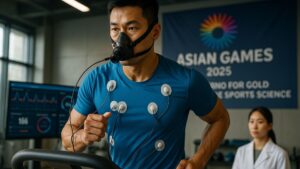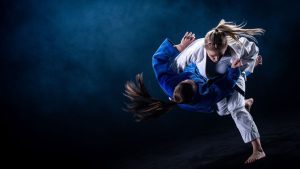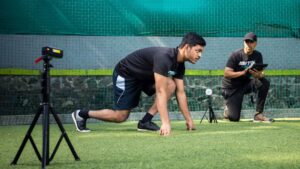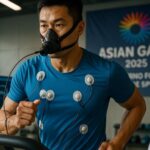India’s sporting landscape lost most of its vibrancy a little over a year back due to the COVID- 19 pandemic. With the closure of multiple training facilities and reduced access to training equipment, the pandemic has challenged athletes with unexpected and a high degree of adversity including disruption of routines, suspension of National camps across multiple sports and uncertainty regarding future tournaments. When an athlete is used to playing their sport for 4- 5 hours a day and it comes to a sudden halt due to uncontrollable factors, it affects their mental health. In such times, mental imagery can be used to overcome the training blues.
What is mental imagery?
Mental imagery, popularly known as visualisation is a process of using all the senses to help with learning and developing new sports skills and strategies as well as visualising success. Imagery is used to familiarise an athlete with their competition venue, increase confidence and motivate the athlete by recalling past positive outcomes, reduce negative thoughts by focusing on the positive outcomes and sharpen the mental blueprint and strengthen the muscle memory for the physical purpose at hand.
How do I Start Mental Imagery?
Start building your imagery script using the PETTLEP model:
- Physical – imagine the relevant physical characteristics
- Environment – imagine the environment where the performance takes place
- Task – imagine the details relevant to the technique or skill
- Timing – the best way to see the images is in ‘real-time’, but ‘slow motion’ imagery can be used to emphasise and perfect more difficult aspects of a skill
- Learning – the imagery should be continually adapted and reviewed over time to include changes in the skill level of the athlete as well as include different skills and
- Emotion – include positive emotions associated with the skills and
- Perspective – the imagery perspective can be first person (through your own eyes) or third person (like watching yourself on video).
Please find below an example of an imagery script that can help you build your imagery process. Feel free to include your skills, techniques, strategies, all your senses (sight, hearing, touch, smell and taste) and positive emotions in the script to make it more effective and powerful. Practice your imagery process daily for 10 minutes.
“Sit or lie down in a comfortable position. Imagine yourself in each situation and fully experience the emotions created. To start, close your eyes and relax by taking a few deep breaths in; feeling the tension release from your body as you relax.
Imagine yourself walking towards your training session with confidence, see yourself wearing your kit and carrying your equipment. When you reach the training ground, look around you, see all the things you generally see during your training session. Start with your physical warm- up, feel each part of your body moving and stretching as you get ready for your training session. You are going to give your 100% effort in today’s training session. You are now physically and mentally ready to play. Today you are going to work on mastering a particular technique. See yourself working on that technique or skill, break down the technique into small, vivid and realistic parts.
For example, if you are a tennis player and want to work on your first serve, see your ready position of the serve, taking the correct stance, and bouncing the ball. See yourself taking the swing and tossing the ball, bringing both your legs together, bending your knees and jumping up to gain contact with the ball at the highest point. Hear the sound of the ball hitting the strings of your racquet. After you hit the ball, see the follow-through of the serve action followed by the ready position at the centre of the court after the serve. See the ball going towards the corner you aimed at, feel the happiness, content, pride of mastering your technique.
That is the conclusion of this imagery session. Slowly start activating your body and mind. At your own pace, take a nice relaxing deep breath in and when you are ready, go ahead and open your eyes.”
Imagery is the most powerful tool to unlock your true potential. You can use this time to build the competitive package that separates you from other athletes — which is your brain.
Photo Source – Tennis World USA.












